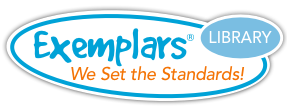Grade 2 - Geometry Unit
Standards covered:
- 2.8 Geometry and measurement
-
2.8A
Create two-dimensional shapes based on given attributes, including number of sides and vertices.
-
2.8B
Classify and sort three-dimensional solids, including spheres, cones, cylinders, rectangular prisms (including cubes as special rectangular prisms), and triangular prisms, based on attributes using formal geometric language.
-
2.8C
Classify and sort polygons with 12 or fewer sides according to attributes, including identifying the number of sides and number of vertices.
-
2.8D
Compose two-dimensional shapes and three-dimensional solids with given properties or attributes.
-
2.8E
Decompose two-dimensional shapes such as cutting out a square from a rectangle, dividing a shape in half, or partitioning a rectangle into identical triangles and identify the resulting geometric parts.
The Geometry Unit involves analyzing attributes of two-dimensional shapes in order to answer questions such as:
- How can you create a shape with six sides and six vertices?
- How are these shapes alike? How are they different? How can you prove they are all polygons?
- Why is a circle NOT a polygon?
- How can you prove that a square is a special rectangle?
Summative Assessment Task
Students determine how many sticks and pebbles are used to make five triangles.
Instructional Tasks/Formative Assessments
Students determine how many paper clips and cubes are needed to create four squares.
Students determine the number of craft sticks needed to make a number of triangles and squares.
Students create a design using pattern blocks, where the number of sides on the pattern blocks adds up to 29.
Students determine who used the most pasta and gumdrops to make quadrilaterals, pentagons and hexagons.

The N/A classification refers to TEKS Standards that cannot be assessed through problem solving.
For this reason, tasks have not been included for these particular standards.
K.7A K.7B K.9B K.9C K.9D